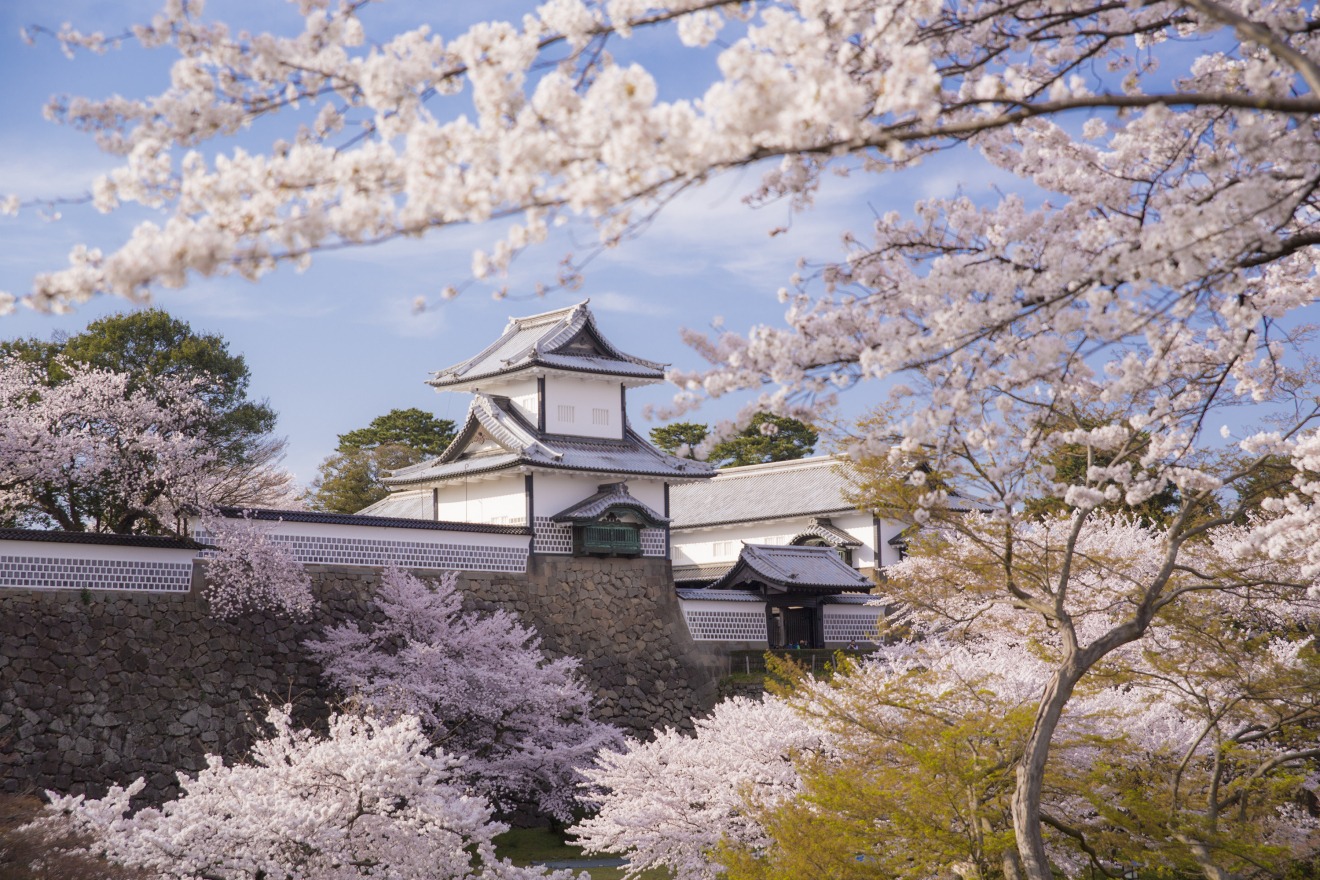In pursuit of samurai culture
Located almost in the middle of Japan’s central island of Honshu, Kanazawa boasts a diverse range of attractions.
These include the urban structure of the castle town developed by samurai and the cultural heritage that it retains, traditional crafts regarded as symbolic of Japanese handiwork and aesthetics, and a unique food culture.
Exploring the history and culture that underlie Kanazawa will make your trip even more enjoyable. Here, we will take a more in-depth look at Kanazawa’s attractions than is typically the case in general guidebooks.

What is Kanazawa’s identity?
It’s a historical city with its roots in the samurai era.
In Japan, a number of castle towns were constructed simultaneously nationwide from the end of the 16th century to the beginning of the 17th century. Kanazawa prospered for 290 years after the feudal lords of the Maeda family formed the town around Kanazawa Castle.
During that period, the extent of the land owned by domains in different parts of Japan was determined using the “Kokudaka” system (a system of yield assessment). The Kaga domain had a kokudaka of one million, which was the highest in Japan. The city retains the heritage of the samurai era, including the Kenrokuen garden and the geisha town of Higashi Chaya District. Cherry blossoms in spring, shades of green in summer, colorful leaves in fall, and snowy scenes in winter-the abundance of nature in each season brings color to the remnants of the city’s history.
Although Kyoto is a famous city rich in Japanese culture and history, Kyoto and Kanazawa have different charms. While the elegant court noble culture flourished in Kyoto, Kanazawa is a city with a sincere and strong samurai culture.
What is the Kanazawa-style samurai culture?
It features tea ceremonies, noh plays, and various traditional crafts.
The successive lords of the Maeda family focused on the promotion of cultural projects through tea ceremonies and laid the foundation of Kanazawa, where arts and crafts continue to thrive today. The “Saikusho,” which was located inside Kanazawa Castle, is regarded as symbolic of this. As a crafts studio run by a domain, which in itself was rare in Japan, it was responsible for the production of luxurious furniture for feudal lords, including tea utensils.
The craftsmanship and spirit of the studio have been passed down through the eras. In 2009, Kanazawa was registered in the crafts area of the UNESCO Creative Cities Network and has spread its deep local craft culture to the world, such as its lacquerware, ceramics, and gold leaf. The city is home to numerous art museums, galleries, and craft shops, where you can find fascinating artworks and products. Search for a traditional cultural experience that is unique to Kanazawa.
What are the characteristics of the castle town of Kanazawa?
It was planned and built by making use of its natural terrain.
Centering on Kanazawa Castle, the castle town of Kanazawa was planned and built by skillfully making use of the natural terrain consisting of three plateau hills and the two rivers, the Saigawa River and the Asanogawa River, that flow between the hills.
The urban structure of the castle town has been inherited in Kanazawa, which has been spared natural disasters and war damage. Rather than preserving individual historic buildings, protected areas have been set up to preserve whole streetscapes and sceneries, which means the entire city is an attraction.
Overlooking the vast Kanazawa Castle Park and Kenrokuen Garden, listening to the murmur of the irrigation water flowing through the Samurai District, and strolling through the maze-like alleys in the Chaya-gai and Temple Districts, you will see the scenery of the old castle town appear.
Does it feel like the clock stopped in Kanazawa?
No, Kanazawa also boasts new attractions.
t’s a traditional city that has inherited the character of a castle town at the same time as being an exciting and creative city with an evolving new culture, including architecture, art, music, and fashion.
Recent years have seen an increase in the number of eminent cultural and tourist spots in terms of both exhibits and buildings. For example, the 21st Century Museum of Contemporary Art, Kanazawa exhibits contemporary art from both home and abroad and boasts more than 2.5 million visitors annually, making it one of the most visited museums in Japan. The D.T. Suzuki Museum introduces Daisetz Suzuki, a Buddhist philosopher from Kanazawa who spread Zen Buddhism throughout the Western world.
Kanazawa is also a transportation hub for land, air, and sea routes, and is easily accessible from Tokyo, Osaka, Kyoto, Nagoya, Gokayama, Shirakawa-go, Takayama, and other places.
Are there any tasty foods?
Kanazawa also takes pride in its food culture.
With varied nature consisting of the sea, rivers, villages, and mountains, there are fresh ingredients available throughout the four seasons in Kanazawa, which has had a rich food culture since ancient times. In particular, thanks to its proximity to the excellent fishing grounds in the Sea of Japan, the freshness and taste of the seafood and the abundance of fish species are among the best in Japan. The city is full of sushi restaurants and is dotted with historic sake and soy sauce breweries as fermented foods such as soy sauce, miso, and sake are also a major feature of Kanazawa’s food culture.
As part of the food culture, you should also experience a “ryotei,” which is a type of restaurant that embodies the aesthetics of Kanazawa’s samurai culture in every aspect, from the food to the architecture, along with the gardens, tableware, and furnishings. If you stay at a ryokan (a type of Japanese traditional inn) with onsen or natural hot springs, you can experience Japanese life and culture in addition to food.
You will find information on food at the tourist information center in Kanazawa Station. Touring Kanazawa with a guide interpreter will enable you to enjoy the city more deeply and joyfully.





























